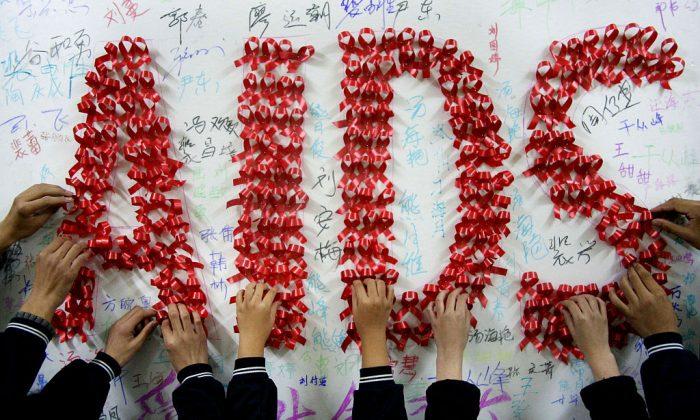In recent years, China has seen an increase in HIV and AIDS cases among young people, especially college students. China observers point out that the prevalence of infections in Chinese universities indicates deeper societal issues and shortcomings within the country’s education system.
The situation was once again highlighted in September by reports of a major HIV outbreak at Anyang University, a private school in central China’s Henan Province.
Li Wei, a resident of Anyang County who preferred to use a pseudonym, recently told The Epoch Times that more than 300 people were infected during this outbreak, including the former deputy county chief and his wife.
Student Infections
Between 2015 and 2019, approximately 3,000 new HIV and AIDS cases were reported annually among young people aged 15 to 24. In 2022, this number surged to 10,700, according to official data from China’s Center for Disease Control and Prevention (CDC).These infections were primarily due to sexual transmission, particularly between same-sex partners, which accounted for 82.5 percent of all student cases, primarily among males, in 2022, the CDC said in a statement.
In 2023, China reported 110,500 new cases of HIV and AIDS among all ages, noting a trend of increasing infections among two demographic groups: the youth and the elderly, with infection rates rising significantly among students and older men. The data did not give an exact number for the 15–24 age group.
It is difficult to assess the veracity of the official data due to Chinese authorities’ past record of underreporting infections and covering up information.
In a recent interview with The Epoch Times, Lai Jianping, former Beijing lawyer and president of the Canada-based Federation for a Democratic China, attributed the rise in HIV and AIDS cases to moral decline throughout Chinese society.“Moral decay has permeated Chinese society, resulting in a lack of respect for moral values and a lack of self-discipline, making the outbreak of AIDS almost inevitable,” Lai said.
“HIV infection among college students has become a phenomenon, not an isolated case,” Zhang Beichuan, a professor at Qingdao University’s medical school, told Chinese state media Sanlian Life Weekly in December 2021.
Zhang in 2000 received the Barry and Martin’s Trust Award, an annual prize for excellence in AIDS education in China.
Wang Cuntong, another expert who has been involved in sex education among college students for many years, told Sanlian Life Weekly that the reason for the alarming spread of HIV on campuses is due to the breakdown of traditional views on sexuality.
“In just 40 years, we’ve seen a remarkable shift. College students now have more liberal attitudes and behaviors about sexuality,” he said.
While nationwide data on HIV prevalence among college students is limited, insights can be gleaned from the most recent available data released by the provincial-level CDC in Shaanxi.
In a 2018 symposium, the agency listed the top 25 colleges and universities in Xi‘an, the provincial capital, with the highest number of HIV infections. There were 267 reported cases among these institutions. Xi’an is the largest metropolis in northwest China, with 64 colleges and universities.
Chinese state media also reported a noticeable trend of increasing HIV infections among high schoolers in recent years.
In Nanjing, the capital of eastern China’s Jiangsu Province, the city’s CDC identified HIV-positive students in 30 schools from January to October 2023, including five students in high school or vocational school.
The southern Chinese province of Yunnan reported in 2022 that the youngest HIV carriers who got infected through sexual transmission were as young as 13 years old.
Ding Jie, director of Nanjing city’s CDC, told Chinese state media in December 2023 that dating through online social platforms, having multiple partners, and engaging in high-risk sexual behavior (such as unprotected sex) with people outside of school are significant risk factors for HIV infection.
“Education and health departments have an obligation to focus on these issues,” he said.







